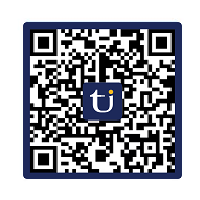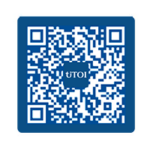International Test of English Proficiency (iTEP) is a measure of English proficiency of non-English speakers. Test results are accepted by more than 600 institutes, including the public university system of California State University. iTEP has test centres in more than 40 countries and is also used by enterprises and government departments. Many large public colleges in Canada recognize iTEP as a language assessment, and Sheridan College is one of them. Here, a student accepted conditionally atSheridan College shares his experience of taking the iTEP and saying goodbye his language preparatory program. (Author: Hu Yuchen, Sheridan College, freshman, May 2020).
Here, a student accepted conditionally at Sheridan College shares his experience of taking the iTEP and saying goodbye his language preparatory program. (Author: Hu Yuchen, Sheridan College, freshman, May 2020).
If you plan to apply to a Canadian college in May/September 2020 or January 2021, contact us at any time. Ourcontact us. Our education consultantswill provide you with free, professional application consultation and other services with our experience of solving more than 1,000 application cases each year.
My personal background and experience
Hello, everyone! I am an art graduate and I completed my undergrad two years ago. In 2018, I applied for a Sheridan post-graduate program with an IELTS Band 6.0. I didn’t get accepted into their language preparatory program, so I had to get a job while waiting for an extra year. This year was my second chance. With an IELTS Band 6.5 (and a writing score of 5.5), I received a conditional offer in February. I was required to either take a language course before July to pass the EPA test or submit a new IELTS score (Band 6, with a minimum of 6.0 in each section). I am the guy who has been tormented by IELTS four times, so I was prepared to take the language course. After all, spending an extra 4 months living abroad is not a great loss.
Here comes the turning point. Due to the pandemic, the visa processing period has been extended to 10 weeks. Canada has closed its borders; schools have switched to online classes and delayed their opening date. The language course that was supposed to start in early May was delayed for more than half a month. During this period of delay, I received a notification from Sheridan that they were starting to accept iTEP scores (list of approved schools can be found on the iTEP official website: iTEP International). IELTS and TOEFL tests have been cancelled month after month since the beginning of the pandemic, and many schools started accepting online test scores as well. I thought to myself: I wonder if I will be eligible for direct admission with an online English test score. Should I just try it? Then, I passed!
Registration and exam preparation
I was down to 5 days before the deadline to submit my score. Yes, 5 days! iTEP issued my [results within 24 hours]. Isn’t it amazing? The only disadvantage seems to be that you can only take the exam twice a month.
However, I did have my uncertainties about taking a test that was new to me. After all, it took me months to prepare for the IELTS test. On the same day, I had bought the [Official iTEP Preparation Guide] (I think it cost 90 RMB) and had it delivered by the courier the next day. It was a rainy day and I was really happy that it arrived so quickly. Because this test is much smaller than other language tests, it was hard enough to find much information about it online, let alone finding a question bank. So, getting the book is actually a good idea. That night, I started my preparation with the book. Except for the cover and the eye-catching heading: "Are you ready? Let's start" that was written in Chinese, this book is all in English, including the introduction, practice questions and other parts. In short, this book is formally written and very useful. After all, this is one of the few ways through which I can get to know more about this test.
*How to start the test: click on the test link from the email, and enter your test ID number and password. Verify your information, browser compatibility, and internet speed. Then there will be an audio, microphone, and camera-recording check (the test is fully recorded). You’ll have a chance to go through these verification steps during practice test, so problems can be solved in advance. The entire test takes about an hour and a half, and you can’t drink or eat anything, nor can you move away from the camera.
This exam is divided into 5 parts (in order): [grammar], [listening], [reading], [writing], [speaking]
Grammar
Personally, I think this section is a favourable one. [Question Types] There are 13 fill-in-the-blank, multiple-choice questions, plus 12 multiple-choice questions, where the examinee selects the part of speech with incorrect English structure. Note: here, you can go back to the previous question and change your answer. Time limit is 10 minutes. There is a small timer at the lower left corner of the screen. Personally, I feel that the time is sufficient and it is not a difficult section.
Listening
[In this section, I strongly recommend that you grab a pen and take notes! You will also hear the instruction, 'You may take notes' during the exam. (My teacher said that we should remember to show our note paper to the camera.)] Otherwise, it will become a test of your memory! So, one thing to remember is (personal suggestion): In the first part, remember the “where,” “what,” “which day,” “how,” etc. Because they are simple short conversations, they are easier to remember. For the second and the third parts, focus on their questions, remember their conclusion, the time and place. For words that you don't understand, you might hear an explanation or something relating to it. The conclusion may be in the answer, and the time and place may be in the question. Don't worry, there won’t be any trick question. After all, this is an official test.
Reading
Writing
The second part is very similar to the IELTS essay writing, introduction, argument, supporting points, and conclusion. Again, I was unable to find questions from previous tests, so I had to write on the spot. For slow typers like myself, I recommend doing typing exercises consistently. I have not tried using other types of input methods so I’m not sure if that can make things easier, but no matter what, I think the time is indeed [very tight].
Summary of experience
It's impossible to improve your reading and writing in a short time. Speaking is my strongest area, so I was not very worried. My results came out to be satisfactory, because doing multiple-choice questions give me the possibility of being correct. Therefore, [don't panic, and hang in there! You can do this!] If you are familiar with the IELTS test, this will just be like the practice exercises. The difficulty of these questions are [a lot, a lot] lower than the IELTS. So, everyone, have confidence in yourself!
Finally, I hope you can all cross out your language requirement as soon as possible and get your ideal school offer!



